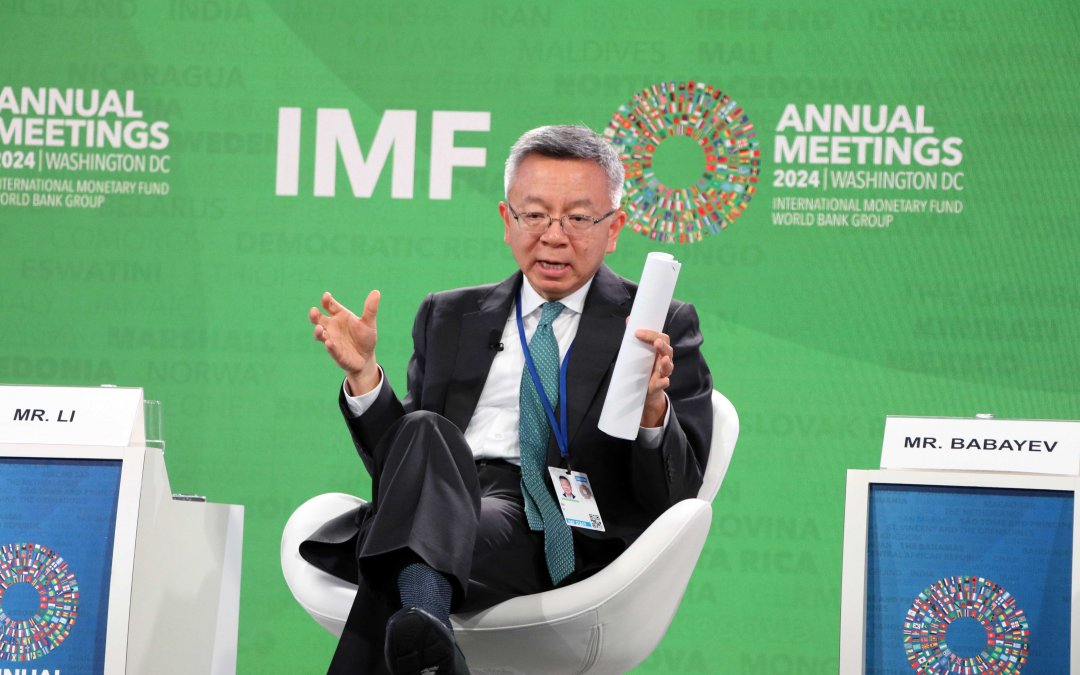WASHINGTON – Only nine years after the signing of the Paris Agreement — a landmark treaty promoting international cooperation to combat climate change — global carbon emissions are out of line with Paris’ global warming targets, the International Monetary Fund (IMF) reported in a Staff Climate Notes report this month.
The IMF report calculated that greenhouse gas emissions must be cut by 25% to meet a 2 degrees target or 50% to reach 1.5 degrees. Currently, national targets would result in only a 12% drop in emissions.
They prescribed urgent action to avoid an “emissions cliff edge,” which would make limiting global warming to only 1.5 degrees Celsius, and even 2 degrees Celsius, unattainable by 2030.
“We’re in the greatest transition since the last industrial revolution,” said Simon Stiell, Executive Secretary of the United Nations Framework Convention on Climate Change, at an IMF climate panel in Washington, D.C., Wednesday.
At the 21st Conference of the Parties to the UN Framework Convention on Climate Change (COP21) in 2015, the Paris Agreement set a target of ideally 1.5 degrees Celsius and “well below” 2 degrees Celsius, beginning in November 2016.
Environmental economist and Stanford professor Charles Kolstad, who was not present at the IMF panel on Wednesday, said it was not surprising that current national contributions were not aligned with the target warming rates. He added that, while the 2 degrees target is helpful in measuring progress, it was a political agreement, rather than a scientific goal.
“It’s a helpful goal to have,” he said. “Just because they didn’t meet the goal doesn’t mean it didn’t serve its purposes.”
“If we don’t achieve 50% by 2030, we’re going to see what we call a ‘climate cliff,’” IMF Deputy Managing Director Bo Li said at the IMF panel. “After 2030, we’d have to do dramatic reduction in the next 30 years after 2030, and that might be unbearable for the global economy.”
The panel focused on “mitigation,” or strategies to lessen the destructive impact of climate change. Stanford professor Rob Jackson, who was not present at the panel, said mitigation is essential to “stave off the worst damages of climate change.”
One of the mitigation strategies presented by the report was setting a carbon price of $85 per tonne, which would align emissions with the 2 degrees Celsius target. In order to reach the 1.5 degrees Celsius target, the price would have to be much higher.
Carbon pricing is a strategy that attaches a financial cost to carbon emissions, passing on part of the burden of emissions to polluters and consumers. Currently, the IMF reports the global carbon price to be only $5 per tonne.
Some U.S. states have adopted emission permit programs to indirectly raise carbon prices. Climate policies, such as subsidies, can also impact carbon pricing, Kolstad said. Still, there is no comprehensive federal or international carbon pricing program.
“Carbon pollution is essentially free in the U.S.,” Jackson said.
During the panel, Li suggested that large economies should take the lead on negotiating an international carbon pricing floor, adding that carbon pricing is critical to climate mitigation policy.
He also noted that climate action demands international cooperation, referencing last year’s Sunnylands Statement, in which the U.S. and China reaffirmed their commitment to working jointly against the climate crisis.
“Climate change is such an existential threat to humanity that we believe, and we hope, that countries can put aside their differences and collaborate,” Li said. “We can collaborate on many fronts, including carbon pricing, including climate finance.”
The IMF report also provides emissions targets aligned with the Paris goals for 2030, averaging the reductions between countries based on their per-capita income. This design would provide for a more equitable distribution of climate responsibility, placing more of the burden on richer countries.
During the panel, Li highlighted how countries with lower levels of pollution are often most affected by climate change, such as island countries in the Pacific and Caribbean. He added that, even within countries, certain groups will be more disadvantaged by the transition to reduce emissions and urged domestic policymakers to support the affected groups.
Next month, almost 200 countries are expected to attend COP29 in Baku, Azerbaijan. Nicknamed the “finance COP,” the conference will center on funding climate solutions.
COP29 hopes to renew ambition surrounding climate action and increase financial support for developing countries hoping to transition to cleaner energy, Mukhtar Babayev, COP29 President-Designate said at the IMF panel.
At COP29, countries may also present updated national contributions, or emissions strategies. Per the Paris Agreement, these are due by early 2025.



